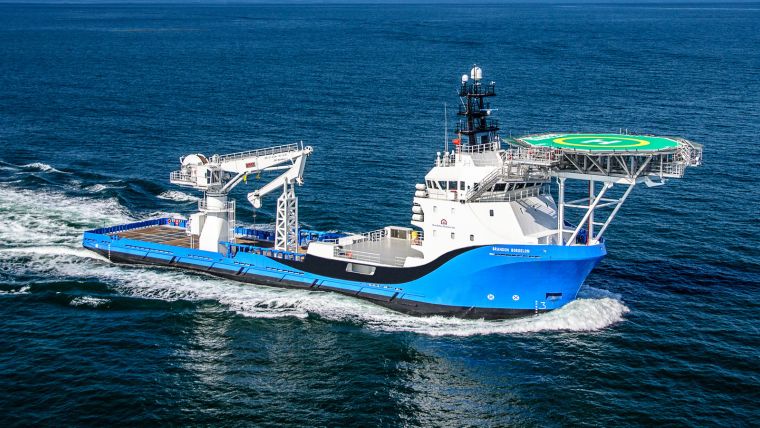DP Technology for New Intervention Vessel
Bordelon Marine, a provider of vessel services to operators in the Gulf of Mexico and around the world, has selected acoustically aided inertial navigation technology from Sonardyne Inc., Houston, for its new Ultra-Light Intervention Vessel (ULIV), Brandon Bordelon. The dual Ranger 2 Pro DP-INS systems will be used to track ROVs during inspection, repair and maintenance (IRM) activities and provide an independent position reference for the vessel’s Marine Technologies Class 2 dynamic positioning (DP) system.
The Brandon Bordelon was delivered at the end of 2015 and is currently under a 60 day contract with Tidewater Subsea. Designed to support complex IRM operations, the vessel features a high capacity deep water crane, infrastructure for two Work-class ROVs and a large, reconfigurable back-deck area.
USBL Compromised by Thruster Aeration
Specialised vessels such as the Brandon Bordelon, conventionally rely on Ultra-Short BaseLine (USBL) acoustics and the Global Navigation Satellite System (GNSS) as their primary sources of DP reference data. However, a vessel’s station-keeping capability can be compromised in the event that the USBL is affected by thruster aeration or noise and the GNSS signal is simultaneously interrupted. The latter is particularly common around equatorial regions and during periods of high solar radiation.
Sonardyne’s Ranger 2 Pro DP-INS system addresses this operational vulnerability. It aids vessel positioning by exploiting the long term accuracy of Sonardyne’s Wideband 2 acoustic signal technology with high integrity, high update rate inertial measurements. The resulting navigation output has the ability to ride-through short term acoustic disruptions and is completely independent from GNSS.
Reduced Subsea Installation and Calibration
DP-INS does not need a full seabed array of transponders to be installed and calibrated before subsea operations can commence. For most subsea tasks, positioning specifications can be met with only one or two transponders deployed on the seabed. Additionally, as the system needs only occasional aiding from the acoustics, transponder battery life is substantially increased and the need to task an ROV to deploy and recover transponders for servicing is reduced.
The equipment supplied to Bordelon Marine included Sonardyne’s ship-mounted inertial navigation sensor and two HPT 7000 acoustic transceivers. The HPTs have been installed on the Brandon Bordelon through-hull deployment poles and are optimised for tracking and dynamic positioning in ultra-deep water.

Value staying current with hydrography?
Stay on the map with our expertly curated newsletters.
We provide educational insights, industry updates, and inspiring stories from the world of hydrography to help you learn, grow, and navigate your field with confidence. Don't miss out - subscribe today and ensure you're always informed, educated, and inspired by the latest in hydrographic technology and research.
Choose your newsletter(s)
























